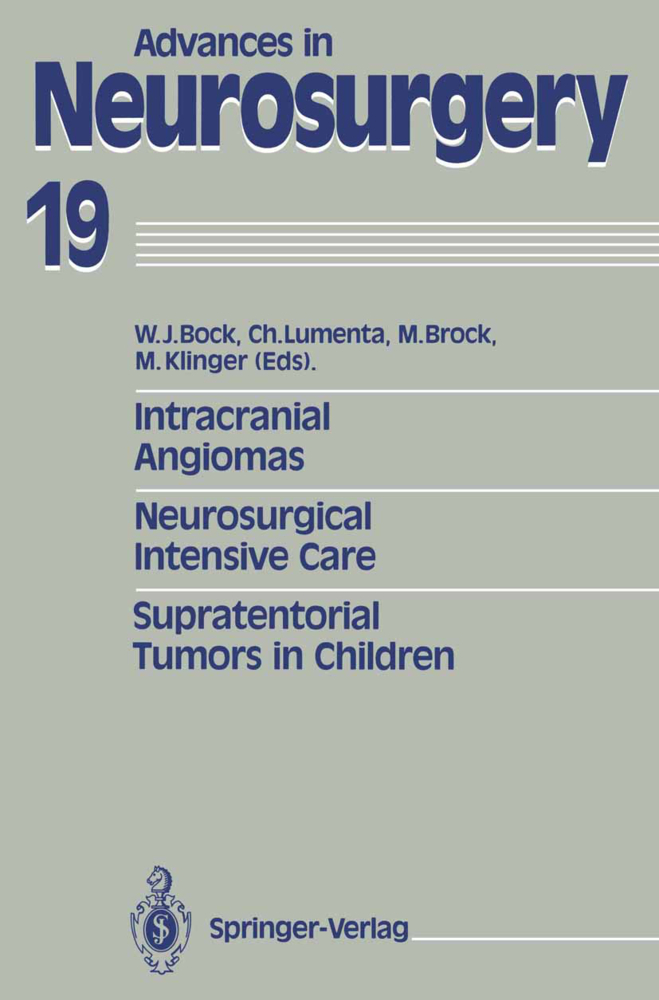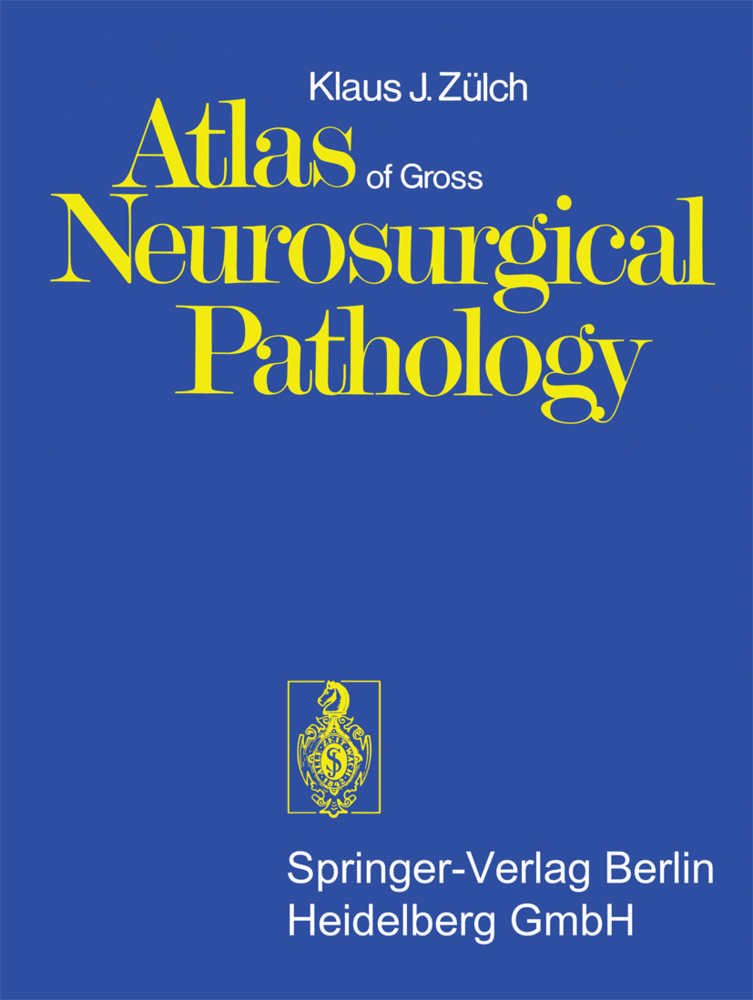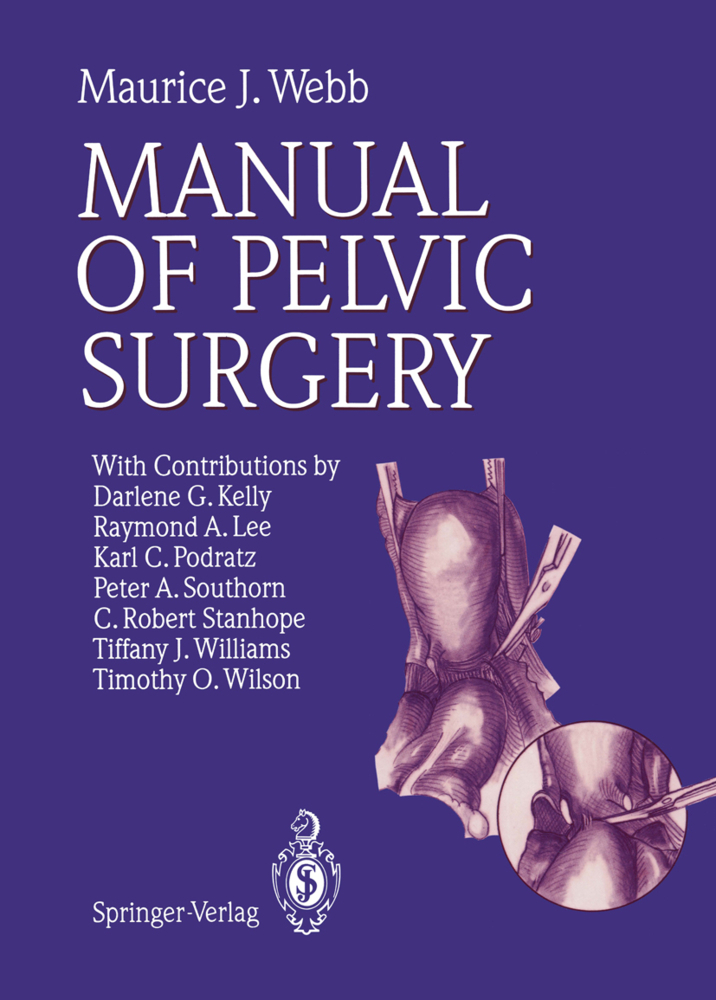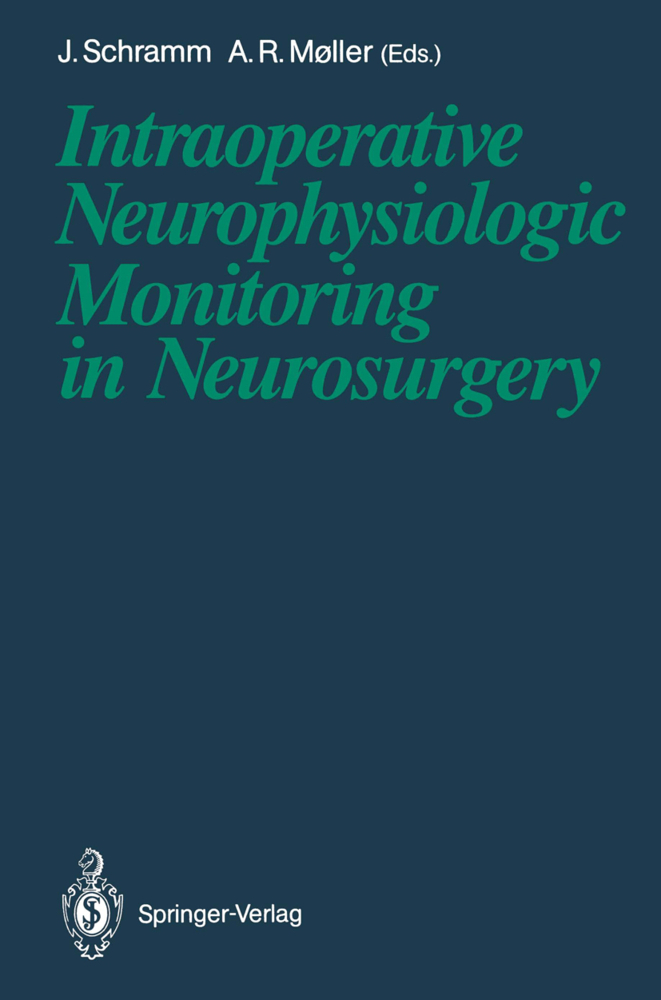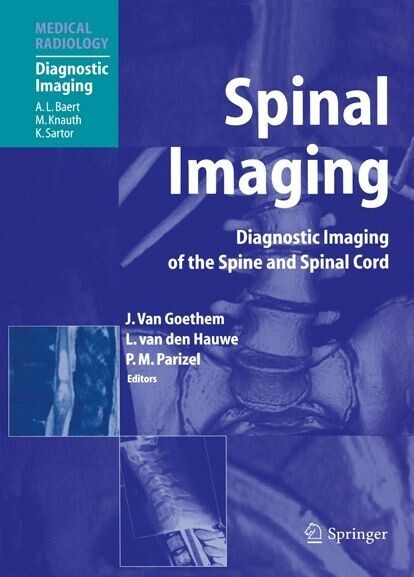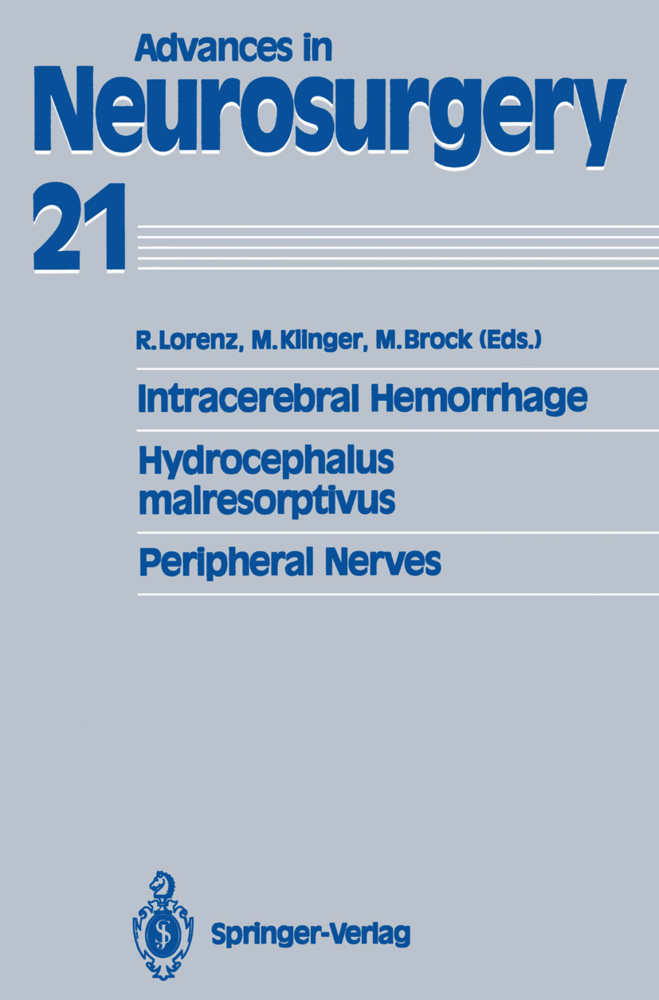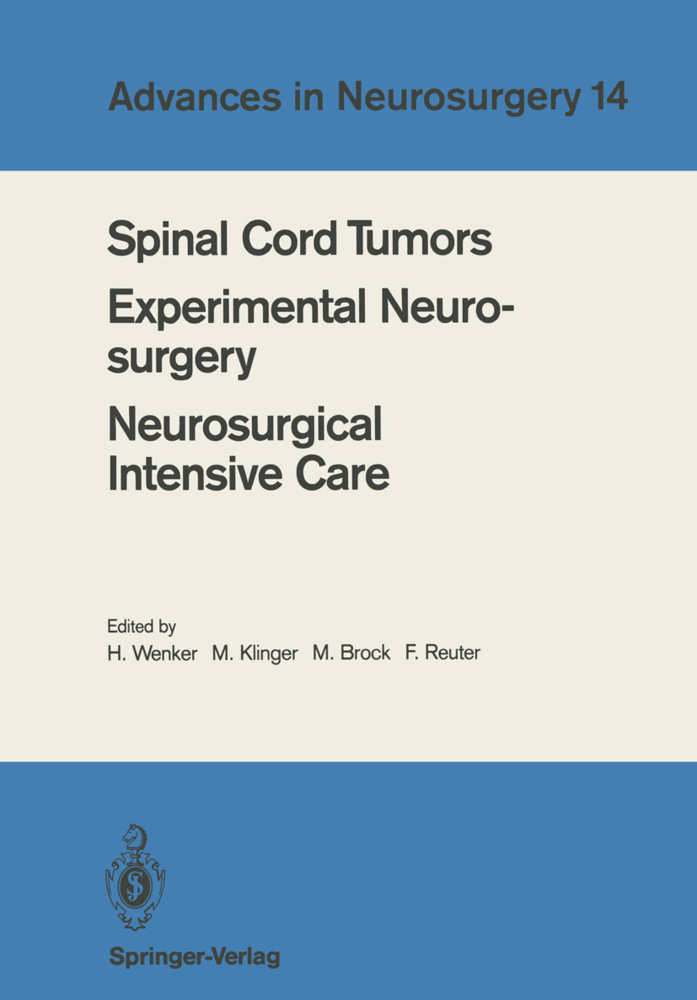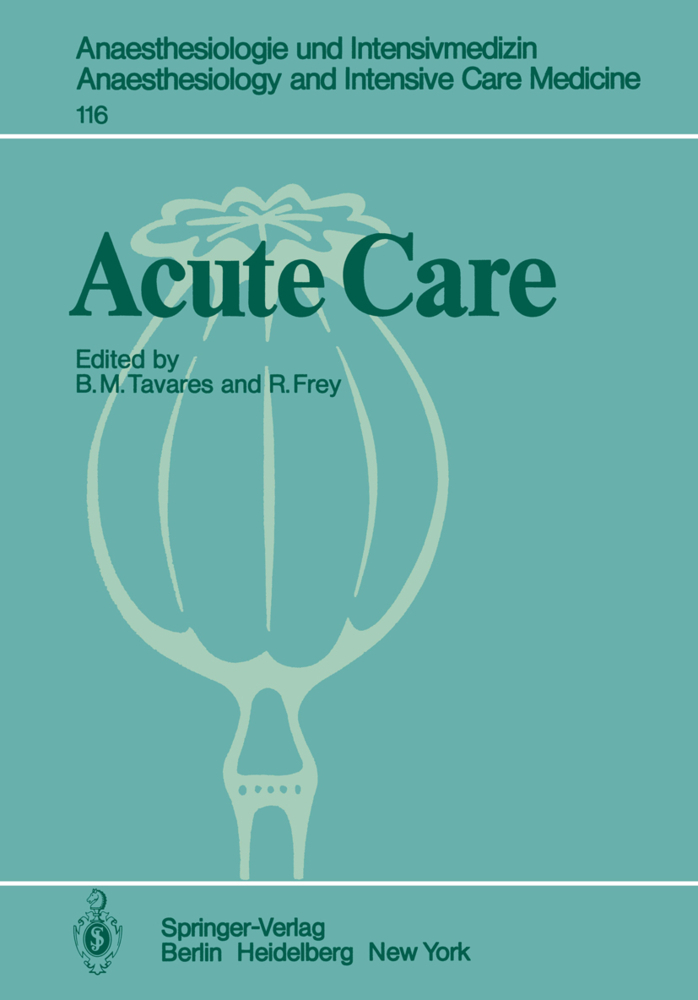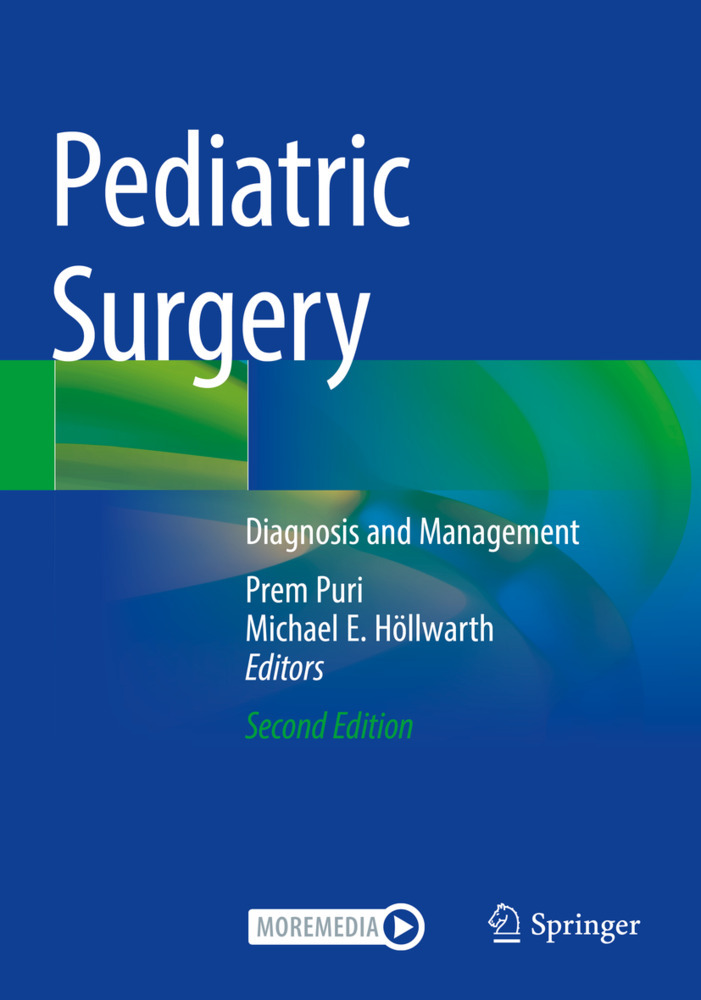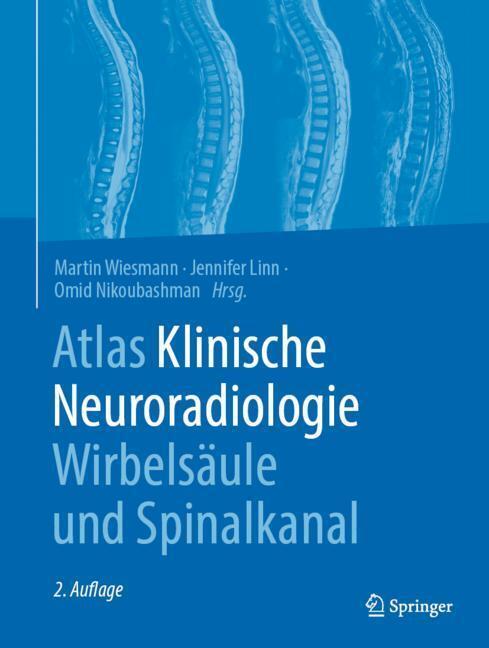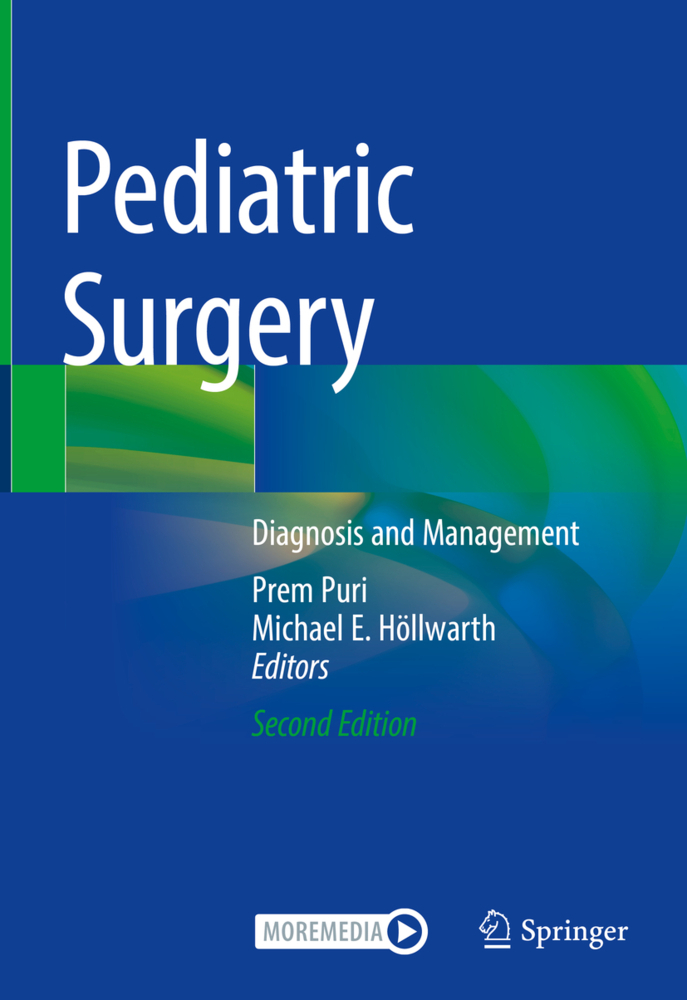Intracranial Angiomas. Neurosurgical Intensive Care. Supratentorial Tumors in Children
Proceedings of the 41st Annual Meeting of the Deutsche Gesellschaft für Neurochirurgie, Düsseldorf, May 27-30, 1990
Intracranial Angiomas. Neurosurgical Intensive Care. Supratentorial Tumors in Children
Proceedings of the 41st Annual Meeting of the Deutsche Gesellschaft für Neurochirurgie, Düsseldorf, May 27-30, 1990
Recent topics of interest in neurosurgery are discussed in selected papers in this volume. The first major topic deals with vascular malformations of the brain, where neuroradiological interventions and microneurosurgical treatment present major advances. The second major topic covers treatment patterns for various supratentorial tumors in Ähildhood. The interdisciplinary aspects of neurosurgical intensive care, particularly electrophysiology and anesthesia, are treated extensively.
Winning Poster Presentations
Perioperative Monitoring of Subarachnoid Hemorrhage: Transcranial Doppler Sonography and Somatosensory Evoked Potentials
Mechanisms of K+-induced Glial Swelling
Effects of Anesthetic Agents on Brain Edema and Cerebral Blood Flow from a Focal Cold Lesion in Rabbit Brain
Single-Stage Neuro-rhinosurgical Operation and Management of Malignant Tumors of the Anterior Cranial Skull Base
Vascular Malformations of the Brain
Diagnostic and Interventional Neuroradiology of Brain Arteriovenous Malformations: Implications on Angioarchitecture for Embolization
Embolization Techniques in the Treatment of Cerebral Arteriovenous Malformations
Results of Combined Endovascular and Surgical Treatment of Intracranial Arteriovenous Malformations
Indications, Technique, and Results of Microsurgical Treatment of Intracranial Arteriovenous Malformations
Surgical Problems in Partially Embolized Angiomas
Arteriovenous Malformations of the Brain: What is the Best Way to Treat Them?
Arteriovenous Malformations of the Medial Surface of the Parieto-occipital Region and the Basal Ganglia
Considerations on the Coexistence of Intracranial Arteriovenous Malformations and Aneurysms
Follow-up After Treatment for Intracranial Arteriovenous Malformations
Posterior Fossa Arteriovenous Malformations: Angioarchitecture in Relation to Hemorrhagic Episodes
Clinical and Radiological Prognostic Factors in Cerebral Arteriovenous Malformations
Venous Angiomas: Experience with Surgical and Nonsurgical Management
Intracranial Venous Angiomas
Congestive Cardiac Manifestations from Cerebrocranial Arteriovenous Shunts
Neuropsychological Abnormalities inPatients with Cerebral Arteriovenous Malformations: A Pilot Study
Cerebral Cavernous Hemangiomas: Treatment and Surgical Decisions
Microsurgery of Cavernous Angiomas of the Brain with Special Reference to Cerebral Midline Localizations
667 Histologically Verified Cavernous Hemangiomas of the CNS: Review of Localization, Symptoms, and Signs, Diagnosis, and Results of Operative Treatment
Asymptomatic Cryptic Vascular Malformations
Supratentorial Tumors in Childhood
Pediatric Brain Tumors
Multidisciplinary Approach to the Treatment of Supratentorial Tumors in Children
Treatment and Course of Malignant Supratentorial Brain Tumors in Childhood
Interstitial Irradiation of Supratentorial Cerebral Gliomas in Childhood with Permanently Implanted Iodine 125: Preliminary Results
Radiological Results of Intracavitary Brachytherapy of Cystic Craniopharyngioma in Childhood and Adolescence
Long-Term Results of Combined Surgery and Radiotherapy of Pilocytic Astrocytomas in the Middle Cranial Fossa
Discussion: PNET - A Melting-Pot of Unspecified Tumors?
Prognosis of Supratentorial Gliomas in Children
Proliferative Activity of Pilocytic Astrocytomas: Examination Using Monoclonal Antibody Ki-67
Immunohistochemical Investigations with a Monoclonal Anti-Epidermal Growth Factor Receptor Antibody in Supratentorial Tumors in Children
Neurosurgical Intensive Care
Neurosurgical Intensive Care - An Interdisciplinary Field
Neurosurgical Intensive Care: General Considerations
Prognostic Value of Motor Evoked Potentials in Traumatic and Nontraumatic Coma
The Temporal Structure of Information Processing in Patients Following Diffuse Head Injuries: Electrophysiological Studies
TCD, SEPs and ICP: Comparative Analysis in Severe Head Injury
ParenteralNutrition in Patients with Spontaneous Intracranial Hemorrhages
Susceptibility to Infection During Continuous Thiopentone Therapy
Infection Rate and Bacterial Spectrum in 413 Patients of a Neurosurgical Intensive Care Unit: Results of a 2-year Prospective Study
Risk During the First Hours After Severe Head Injury
Disturbances of Water-Electrolyte Regulation After Surgery of the Hypothalamus and Pituitary Region
CBF Dynamics During Hyperventilation Therapy for Intracranial Hypertension
THAM in Traumatic Brain Swelling: A Comparative Experimental and Clinical Study
Effects of the Antihypertensive Drug Ketanserin on Intracranial Pressure in Patients with Head Trauma
A Comparison Between Mannitol and Glycerol Therapy for Intracranial Hypertension
Decompressive Craniectomy After Severe Head Injury: Useful Therapy in Pathophysiologically Guided Indication
Safety of Fraxiparine Administration in Neurosurgical Patients: Preliminary Report.
President's Opening Remarks
Coordination of Neurosurgical Training in the Europe of the 1990sWinning Poster Presentations
Perioperative Monitoring of Subarachnoid Hemorrhage: Transcranial Doppler Sonography and Somatosensory Evoked Potentials
Mechanisms of K+-induced Glial Swelling
Effects of Anesthetic Agents on Brain Edema and Cerebral Blood Flow from a Focal Cold Lesion in Rabbit Brain
Single-Stage Neuro-rhinosurgical Operation and Management of Malignant Tumors of the Anterior Cranial Skull Base
Vascular Malformations of the Brain
Diagnostic and Interventional Neuroradiology of Brain Arteriovenous Malformations: Implications on Angioarchitecture for Embolization
Embolization Techniques in the Treatment of Cerebral Arteriovenous Malformations
Results of Combined Endovascular and Surgical Treatment of Intracranial Arteriovenous Malformations
Indications, Technique, and Results of Microsurgical Treatment of Intracranial Arteriovenous Malformations
Surgical Problems in Partially Embolized Angiomas
Arteriovenous Malformations of the Brain: What is the Best Way to Treat Them?
Arteriovenous Malformations of the Medial Surface of the Parieto-occipital Region and the Basal Ganglia
Considerations on the Coexistence of Intracranial Arteriovenous Malformations and Aneurysms
Follow-up After Treatment for Intracranial Arteriovenous Malformations
Posterior Fossa Arteriovenous Malformations: Angioarchitecture in Relation to Hemorrhagic Episodes
Clinical and Radiological Prognostic Factors in Cerebral Arteriovenous Malformations
Venous Angiomas: Experience with Surgical and Nonsurgical Management
Intracranial Venous Angiomas
Congestive Cardiac Manifestations from Cerebrocranial Arteriovenous Shunts
Neuropsychological Abnormalities inPatients with Cerebral Arteriovenous Malformations: A Pilot Study
Cerebral Cavernous Hemangiomas: Treatment and Surgical Decisions
Microsurgery of Cavernous Angiomas of the Brain with Special Reference to Cerebral Midline Localizations
667 Histologically Verified Cavernous Hemangiomas of the CNS: Review of Localization, Symptoms, and Signs, Diagnosis, and Results of Operative Treatment
Asymptomatic Cryptic Vascular Malformations
Supratentorial Tumors in Childhood
Pediatric Brain Tumors
Multidisciplinary Approach to the Treatment of Supratentorial Tumors in Children
Treatment and Course of Malignant Supratentorial Brain Tumors in Childhood
Interstitial Irradiation of Supratentorial Cerebral Gliomas in Childhood with Permanently Implanted Iodine 125: Preliminary Results
Radiological Results of Intracavitary Brachytherapy of Cystic Craniopharyngioma in Childhood and Adolescence
Long-Term Results of Combined Surgery and Radiotherapy of Pilocytic Astrocytomas in the Middle Cranial Fossa
Discussion: PNET - A Melting-Pot of Unspecified Tumors?
Prognosis of Supratentorial Gliomas in Children
Proliferative Activity of Pilocytic Astrocytomas: Examination Using Monoclonal Antibody Ki-67
Immunohistochemical Investigations with a Monoclonal Anti-Epidermal Growth Factor Receptor Antibody in Supratentorial Tumors in Children
Neurosurgical Intensive Care
Neurosurgical Intensive Care - An Interdisciplinary Field
Neurosurgical Intensive Care: General Considerations
Prognostic Value of Motor Evoked Potentials in Traumatic and Nontraumatic Coma
The Temporal Structure of Information Processing in Patients Following Diffuse Head Injuries: Electrophysiological Studies
TCD, SEPs and ICP: Comparative Analysis in Severe Head Injury
ParenteralNutrition in Patients with Spontaneous Intracranial Hemorrhages
Susceptibility to Infection During Continuous Thiopentone Therapy
Infection Rate and Bacterial Spectrum in 413 Patients of a Neurosurgical Intensive Care Unit: Results of a 2-year Prospective Study
Risk During the First Hours After Severe Head Injury
Disturbances of Water-Electrolyte Regulation After Surgery of the Hypothalamus and Pituitary Region
CBF Dynamics During Hyperventilation Therapy for Intracranial Hypertension
THAM in Traumatic Brain Swelling: A Comparative Experimental and Clinical Study
Effects of the Antihypertensive Drug Ketanserin on Intracranial Pressure in Patients with Head Trauma
A Comparison Between Mannitol and Glycerol Therapy for Intracranial Hypertension
Decompressive Craniectomy After Severe Head Injury: Useful Therapy in Pathophysiologically Guided Indication
Safety of Fraxiparine Administration in Neurosurgical Patients: Preliminary Report.
Bock, Wolfgang J.
Lumenta, Christianto
Brock, Mario
Klinger, Margareta
| ISBN | 978-3-540-53311-5 |
|---|---|
| Artikelnummer | 9783540533115 |
| Medientyp | Buch |
| Copyrightjahr | 1991 |
| Verlag | Springer, Berlin |
| Umfang | XIII, 283 Seiten |
| Abbildungen | XIII, 283 p. 55 illus. |
| Sprache | Englisch |

